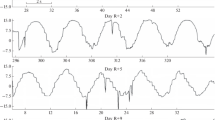Summary
The special visual attributes called for in recognition of aircraft in the night sky have been examined. It has been shown that it is not sufficient merely to reach an awareness of an object by virtue of its just discernible contrast.
A high degree of dark adaptation is a valuable asset, but it is not enough. Accuracy in analysis must be regarded as an essential part of those features of night vision that may be grouped within the expression “ night visual capacity ”.
Night vision, although not necessarily of a high order, is required for the safe handling of aircraft near the ground.
The field of vision embracing those essential qualities of sight necessary for landing aircraft, either by day or night, is far narrower than was at one time maintained.
It has been found that the influence of heterophoria upon landing depends whether the condition is inherent or has been acquired. Acquired heterophoria is a definite cause of inconsistency in landing aircraft. The inherent type exercises an adverse effect only when the condition is pronounced. Under such circumstances the continuous strain in maintaining binocular vision may result in the development of symptoms.
Similar content being viewed by others
References
Hecht and Mandlebaum,Jo. Am. Med. Assoc., 1939, 112, 1910.
Dow and Steven,Jo. Physiol., 1941, 100, 256–262.
Tansley, K.,Brit. Jo. Ophthalmol., 1939, 23, 161.
Lythgoe, R. J.,Brit. Jo. Ophthalmol., 1940, 24, 21.
Documenta Ophthalmologica, 1938, 1.
Craik and Vernon,Brit. Jo. Psychol. (Gen. Sec), 1942, 32, 206–230.
Hecht, Haig and Chase,Jo. Gen. Physiol., 1937, 20, 831.
Livingston, P. C.,Brit. Jo. Surg., 1942, 29, 115, 339.
Yudkin, S.,Lancet, 1941, ii. 787.
Barondes, R. de R.,Med. Rec., 1941, 154, 427.
Wittkower, Rodger, Scott and Semeonoff,Brit. Med. Jo., 1941, ii, 571 and 597, 571–6 and 507–610.
Livingston, P. C.,Brit. Orth. Jo., 1939, 1, 71.
Livingston, P. C,Modern Trends in Ophthalmology, 1940, 611.
Additional information
Being the Montgomery Memorial Lecture, delivered at the Royal College of Surgeons in Ireland, Dublin, May 7th, 1942.
Rights and permissions
About this article
Cite this article
Livingston, P.C. Studies in night vision and night visual judgment as it concerns the ophthalmology of flying. Ir J Med Sci 17, 177–196 (1942). https://doi.org/10.1007/BF02950444
Published:
Issue Date:
DOI: https://doi.org/10.1007/BF02950444




